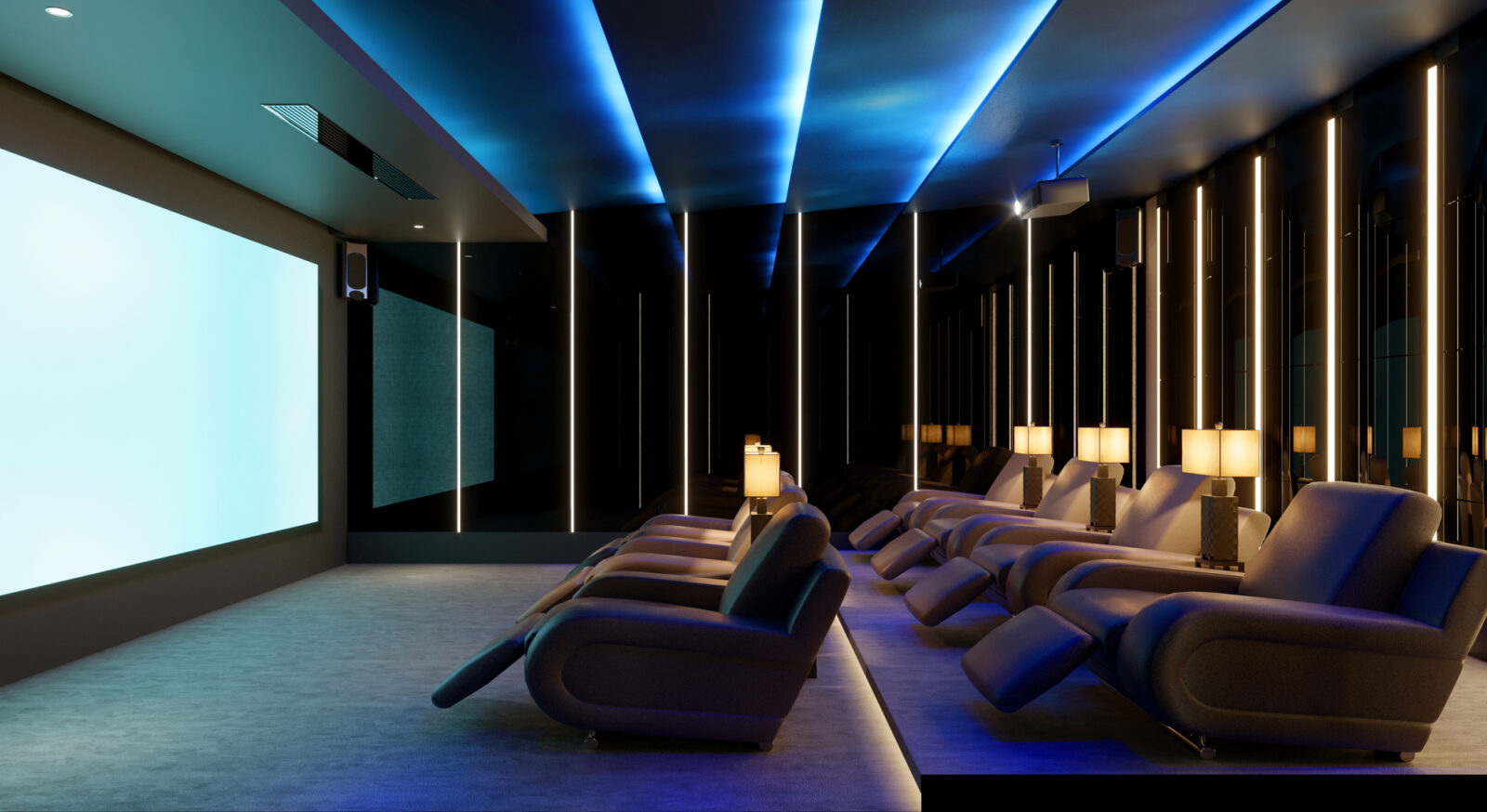Many people dream of bringing the magic of the cinema into the comfort of their own homes. It gives rise to a heightened level of entertainment, which can be an escape from the hustle and bustle of the outside world for many homeowners.
Of course, home theaters have evolved into something more sophisticated since their first emergence. You can thank technological advancements like audiovisual equipment improvements. But doesn’t it also mean that recreating the cinema’s magic in your living room is easier than ever?
Yes, that’s right. However, while it’s true that high-quality video and audio components make home entertainment rooms perform better, it’s their overall design that truly elevates the experience.
That poses the question, ‘How to design the perfect home theater?’ Well, that’s exactly what we’re going to discuss in this post. Read on for the steps.
Table of Contents
Choosing the right room
With custom home theater systems, the right room equals the right acoustics and light control, which translates to an immersive experience. So, how do you determine one? By considering the following:
- Room size and shape: Ensure that the room is spacious enough. You’d want the seating, as well as the audio and video equipment, to fit in it while still providing optimal viewing experience. Consider any extras like a gaming setup in your selection, too.
- Natural light and potential noise source: External light isn’t your best friend when designing a home theater. So, your chosen room should be able to accommodate light control accessories such as curtains or blinds. Also, you wouldn’t want your room to be near the road or street where pedestrian or vehicle noise can cause interference. Even picking a room with adjacent rooms that tend to be noisy throughout the day isn’t a good idea.
- Acoustics and potential sound insulation requirements: The room’s shape and the materials used in it affect the space’s sound quality. For instance, expect audio distortions or echoes when your chosen room has an irregular shape with hard and reflective surfaces.
Choose the right room for your home theater if you want to lay a solid foundation for designing one that’s truly immersive with a high-quality viewing and listening experience.
Designing the home theater’s layout
Okay, so you’ve already picked the right room. What’s next? It’s time to design the space’s layout. The goal is to greatly enhance the viewing experience. Here’s how you can ensure optimal viewing angles and audio quality:

Optimal seating arrangement
An optimal seating arrangement takes into account the number of viewers and how it fits the room’s size and shape. Familiar with the ‘stadium arrangement’? It’s one of the home theater’s popular seating layouts. It involves tiered rows providing a clear line of sight, improving viewing angles. Of course, that’s just one option. Feel free to explore other layouts, too.
Comfort level
Chances are you and your family and guests will stay in your would-be home theater for extended periods. That’s exactly why comfort is paramount in designing its layout.
Select ergonomically designed seats and ensure that they provide a clear view of the screen, too. Furthermore, the seats’ distance from the screen should be optimal to guarantee immersion sans the dreaded eye strain.
Also, don’t forget about the height of the screen. Ideally, its lower third should be at eye level of a seated viewer. You wouldn’t want your family and guests to experience neck strain.
Ideal audio equipment placement
Part of designing a home theater’s layout is placing the speakers in their ideal locations. So, where do you put them? Well, it actually depends on several factors. However, the general principles include placing the speakers at the ear level of a seated viewer. For the distance, ensure that the front audio equipment is equidistant from the viewer’s listening position, while the surround speakers are placed to the sides just slightly behind the viewer.
Here’s a bonus tip: Avoid placing your audio equipment in the corners or close to walls if you don’t want muddy sound.
Acoustic treatment
Acoustic treatment is the control of the sound reflections and resonances within your home theater room. You don’t want to miss this one out when designing a home theater. Types of acoustic treatments include absorption panels, diffusers, and bass traps. They all aim to prevent sound distortions, echoes, excessive reverberations, or anything that diminishes the audio experience.
Lighting design
With the room, layout, and acoustics out of the way, let’s divert our focus to the home theater’s ambiance or overall aesthetic appeal. First step? Have thoughtful lighting choices. You got several options in this department – dimmable overhead lights, wall sconces, LED strip lighting, which uses at least 75% less energy, and fiber optic star ceiling.
No matter what lighting option you go for, ensure to zone your lighting or divide it into different zones to control the lighting levels more effectively, creating a balanced ambiance. Pay attention to your lighting placement, too. You don’t want direct illumination on the screen, or glares will disrupt the viewing experience.
Conclusion
Careful planning and attention to detail are key to creating a perfect home theater. There should be a balance between functionality, comfort, and aesthetics. Armed with the tips and strategies above, you can start turning your dream of enjoying hours of entertainment at home into a reality!





